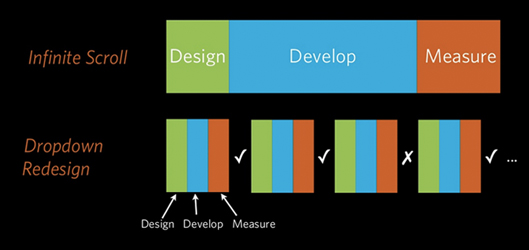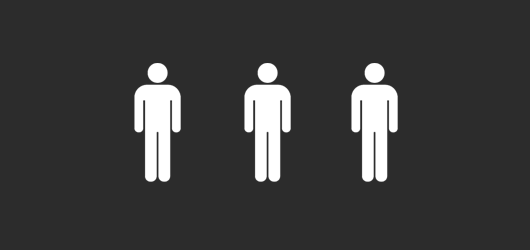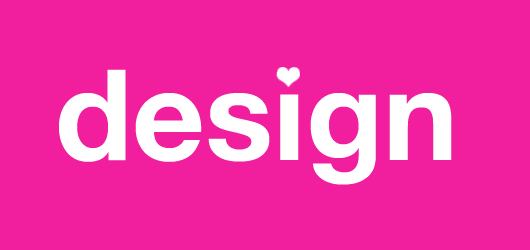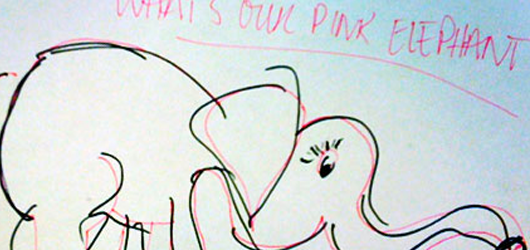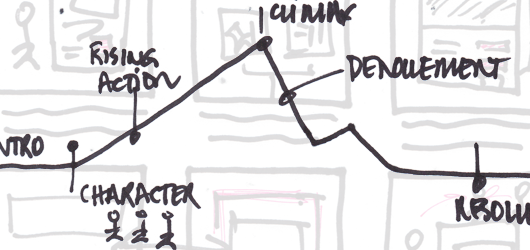At the start of June, I spent 8.5 hours trapped in a toilet room, overnight, with a cat, in Paris. Very long story and I’m sure you have so many questions. So I published the story on Medium in case you want to hear what actually happened.
3 Ways To Help Your Product & Team Avoid Chaos
A few days ago I was on a bus from Boston to Maine and the guy next to me starting chatting. I had a lot of work I wanted to get done on the bus ride, but he kept talking and it was a bit difficult to duck out of the conversation.
Small Changes, Big Rewards: How Etsy Embraces Continuous Experimentation
If I were working at a start up right now, I would take a little time out and have my entire team watch this talk that Dan McKinley (@mcfunley) the Principal Engineer at Etsy gave about continuous experimentation. It reinforces a key lesson that is so simple, but so easily forgotten.
Why You Should Start With A Minimum Viable Team
This week I was thinking a lot about what makes a great startup team. So many of the “lists” that come out try to identify what “not” to do in a startup and the 10 reasons why startups fail. A lot of times, these lists focus on the product – explaining that the startup failed because the product was too complicated, or too simple, or just didn’t make sense. However, I think another key reason that we need to address is the element and influence of the initial team, the first key hires that you make as a startup.
Rather than give my thoughts, I’d like to point to you to a really awesome post that Charlie O’Donnell wrote on the subject. His blog post Minimum Viable Team is a complete breakdown of every conceivable role you think you would need, and then he slowly eliminates each role that you don’t really need to get to a Minimum Viable Product. This method of slowly showing you what you can Continue reading
On Creating A Culture Of Design: The Founding Team
Products are not only judged on what they do, they’re judged on how they do it. The experience that someone has when using your product is largely what they remember. These experiences are not forgotten quickly and are shared stories that spread through networks of people as their either praise or throw punches at your product.
Today, consumers expect great experiences, and they really are learning to spot the difference between a good and bad experience. It’s not enough to just fulfill a need or solve a problem. You have to do it in a way that creates an experience. In the past, we’ve had a strong focus on creating great technology. But, unless the great technology is woven into a thoughtful user experience, chances are that it will never be accessible to a consumer.
How do we ensure that experience is part of the fabric of our products and process? Continue reading
Why Everyone Can’t Be A User Experience Designer
As the Internet and technology because more tightly woven into the fabric of people’s everyday lives, a false sense of knowledge rises. This is a rising challenge for the user experience designer – trying to balance input from vaguely informed stakeholders who passionately believe they know what’s right, just because they use the medium.
Seasoned user experience designers know that education is a large portion of your job and deliverables. You continually find yourself explaining “why” things are the way they are. But today, the element of education as a part of the user experience design’s job is more present than ever. The reason is that we have a breed of people who use the Internet who feel as though they know best. Therefore, they are armed with feedback and input – we’ve all heard it …. “but that’s how they do it on Facebook”, “it can’t be that hard”, “what do you mean it will take a week”. Continue reading
Why We Need Product Storytellers At The Heart Of Product & Technology
Update: This post received a lot of great feedback and was re-written in more detail as an article for UX Magazine.
I am not a designer.
The word ‘design’ is far too limiting. What I really do is tell stories. I ask questions, find answers, and figure out how to distill a vision and idea into a product story.
There’s a lot of talk right now in the start up world about creating a founding team and whether a founder should hire technical or product first. The answer is more than obvious.
Technology is a means by which the product is brought to life.
But, without a story for the product, the rest of the team doesn’t don’t know what to build, sell, and evangelize. I’ve seen this happen over and over.
A founder has an idea and hires a team, but often doesn’t have strong product perspective on that team. Then, someone like me comes in, talks to the founder, and synthesizes the vision into a story and prototype, leading to the realization that what the founder envisioned is not what’s being created.
A founder has the vision. A founder provides the starting point. A founder has the initial idea … but a product is more than an idea. A product is more than a website. A product is more than a transaction. A product creates a relationship that produces an experience that brings added value to someone’s life.
In the article The Science of Relationships, I asked the question:
“How can we transform advertising from a series of static touchpoints with a brand to a dynamic network of thoughtfully designed interactions that are tailored to and seamlessly blend with people’s lifestyles – creating a strong brand connection – a lifelong marriage with the brand.”
We need to start thinking about products as relationships. Every company needs a product story that clearly outlines how a relationship will be created and sustained with every person that engages in the product. Part matchmaker, part marketer, part technologist, part artist, part strategist … the product storyteller liaises between all areas of an organization to ensure to that everything being created is helping to strengthen the relationship that the product has with the consumer.
Today we are feeling the effects of not having enough product storytellers. This hinges on the fact that too many people who call themselves designers lack the fundamental skill of storytelling. Before you can communicate anything visually, you have to establish the story that your visualization or experience is going to tell.
To every designer, you need to become a better product storyteller. You need to stop focusing on the pixels and think about the plot, the people, and the product. Write more. Ask questions. Become an expert in relationships.
To every technologist, I respect you. I also know enough of you to know that you feel the frustration and often have to do things over and over due to an unfocused product vision. So please understand that in saying that product should come first, I do this so that when you embark on creating a product, the vision is established and you can focus on creating great technology, not deciphering a disconnected vision.
To every founder, never stop having ideas. It’s because of people like you that new amazing products are brought to market. But, in a society where attention spans keep getting shorter and shorter, please realize that it is the product that establishes the strongest relationships that will win. So before you do anything else, establish your product’s story.
Update # 1:
This post received a lot of great feedback and was re-written in more detail as an article for UX Magazine.
Update # 2:
I’ve been asked to speak on the idea of product storytelling a few times. Here are the slides from one of my talks:


